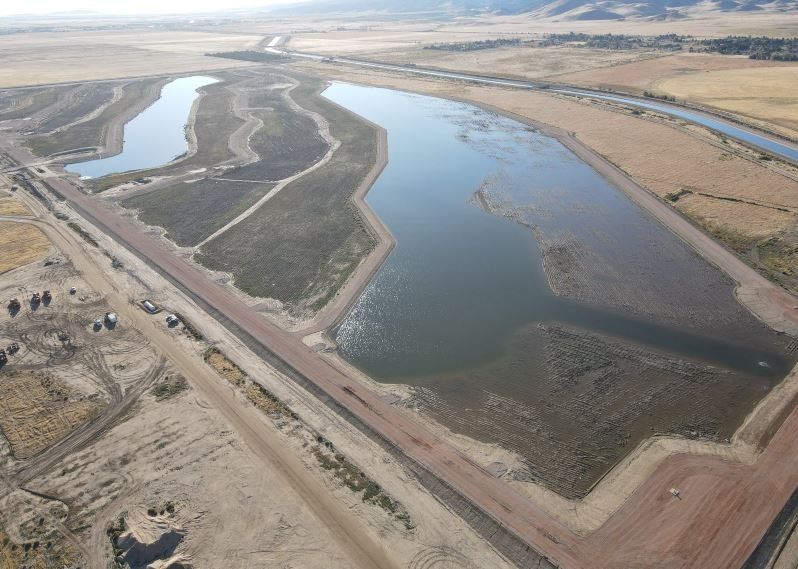
Navigating Financial Challenges: Water Rates and Taxes on the Rise in Southern California
As residents of Southern California brace themselves for the challenges of the coming years, two significant announcements have sent shockwaves through the region. The Metropolitan Water District of Southern California (MWD) has unveiled plans to increase water rates and property taxes, while Southern California Edison (SCE) has implemented a rate hike for 2024. These developments have left many households grappling with the looming specter of rising utility costs and taxes.
Metropolitan Water District of Southern California: Adapting to Changing Water Dynamics
The Metropolitan Water District of Southern California (MWD), the largest urban water district in California, serves 19 million people across six counties. However, the success of water conservation efforts has led to a decline in water sales, necessitating rate increases to offset lost revenue. The MWD’s Board of Directors, chaired by Adán Ortega Jr., approved an 8.5% hike in water rates for 2025 and 2026, alongside a doubling of property tax assessments—the first such increase in over 30 years.
Chair Ortega Jr. emphasizes the need for fiscal responsibility in light of declining revenue and escalating expenses. The unanimous adoption of the budget underscores the imperative of balancing financial realities with the provision of essential services. Despite concerns raised by some board members and residents, the rate increases are deemed necessary to sustain operations, finance climate change adaptations, and ensure water availability for millions of Californians.

Exploring the Implications of MWD’s Rate Increases
The MWD’s decision to raise water rates and property taxes has generated significant discussion and debate among residents and stakeholders across Southern California. While the rate increases are intended to address revenue shortfalls and fund critical infrastructure projects, they have raised concerns about affordability and economic impact.
For many households, the prospect of higher water bills and property taxes presents a formidable challenge, particularly in light of ongoing economic uncertainties and cost-of-living pressures. The burden of these increases is felt most acutely by low-income families and individuals living on fixed incomes, who may struggle to absorb the additional costs.
Moreover, the MWD’s reliance on property taxes as a revenue source has drawn criticism from some quarters, with concerns raised about the regressive nature of this approach. Critics argue that shifting the financial burden onto property owners disproportionately affects vulnerable communities and exacerbates existing inequalities in access to essential services.
Southern California Edison (SCE) Rate Increase: Straining Household Budgets
In parallel with rising water costs, Southern California Edison (SCE) has implemented a rate increase for 2024, compounding the financial burden faced by residents. The electric utility company, serving approximately 15 million people across central, coastal, and southern California, cites the need to cover rising power costs, infrastructure maintenance, shareholder compensation, and wildfire mitigation efforts.
The rate hike translates to a 7.21% increase in the average residential electric bill, with even greater impacts on Residential California Alternate Rates for Energy (CARE) customers. While SCE’s justifications appear valid, recent wildfires linked to utility equipment failures have heightened skepticism regarding the company’s claims. Concerns over the affordability of utilities, especially for vulnerable populations, underscore the urgency of exploring sustainable alternatives.
The Case for Solar Energy: Empowering Residents to Take Control
Amidst escalating utility costs, homeowners are urged to explore alternative energy sources such as solar power. Solar panels offer a pathway to energy independence, enabling households to reduce reliance on traditional utility grids and mitigate the impact of rate hikes. By harnessing solar energy and implementing energy-efficient practices, residents can lower electricity bills and contribute to environmental sustainability.
Various incentives and rebates make solar adoption financially viable for homeowners. Federal, state, and local programs offer tax incentives, rebates, and financing options, easing the upfront costs associated with solar installation. Long-term benefits, including increased property value and reduced carbon footprint, further underscore the value of embracing solar energy as a sustainable solution.
Navigating the Transition: Challenges and Opportunities
As utility costs continue to rise, residents of Southern California are confronted with the imperative of charting a sustainable future. Through collective action and a commitment to innovation, individuals and communities can mitigate financial strains and build resilience against future uncertainties. By prioritizing innovation, community engagement, and environmental stewardship, Southern California can navigate the challenges of rising utility rates and taxes while forging a path towards a more sustainable future.
Conclusion: Towards a Sustainable Tomorrow
In conclusion, the convergence of water rate increases and SCE rate hikes underscores the urgent need for proactive and sustainable solutions in Southern California. Through collective action and a commitment to innovation, residents can navigate financial challenges, enhance resilience, and build a brighter future for generations to come. By embracing renewable energy sources, investing in conservation efforts, and fostering community partnerships, Southern California can overcome the hurdles posed by rising utility costs and emerge stronger, more resilient, and more sustainable than ever before.



Leave a Reply